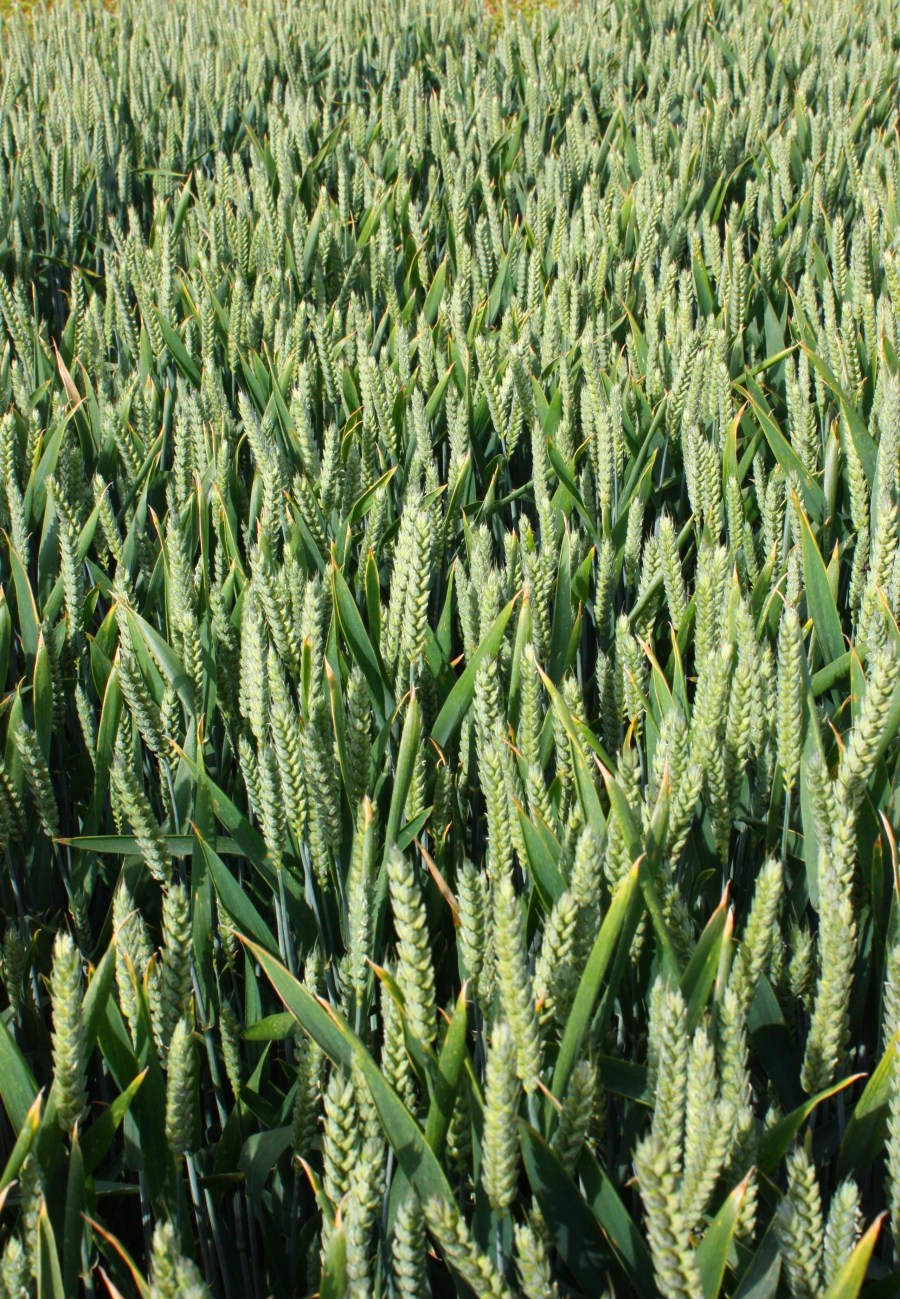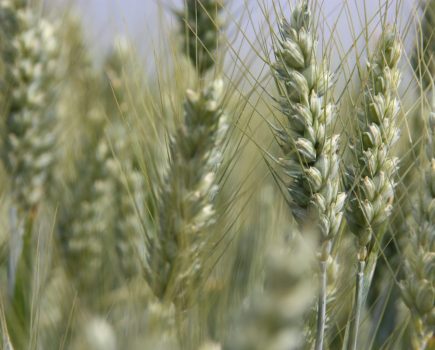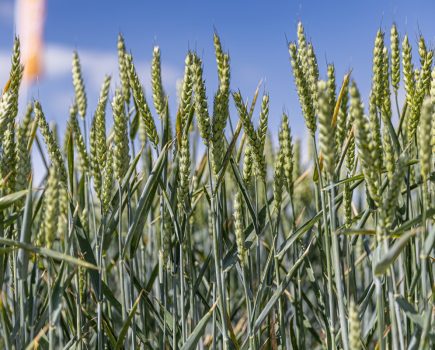Not only does Hexton offer a versatile yet reliable soft Group 4 feed wheat option, but it’s also part of a new approach to royalties which strives to deliver commercial fairness to both grower and breeder. CPM finds out more.
“For the grower it’s fairer, whereas for the breeder, it’s ensuring investment is returned.” HUGH HARLEY
By Janine Adamson
With such slim chances of market success, plant breeding is undoubtedly a risk-laden sector, yet its R&D pipeline is intrinsically linked to the future prosperity of the UK’s arable industry.
At the same time, growers face an increasingly challenging environment, whether that be from dwindling financial support mechanisms, extreme weather events, or ever-evolving pest and disease threats.
But what if there was a method to fairly reward both parties for their investment in a particular crop variety, and thus continue to promote innovative breeding activity in the UK?
According to the Breeders Intellectual Property Office (BIPO)’s Hugh Harley, a new royalty collection approach could deliver just that – based around a unified rate for both certified and farm-saved seed.
“In the past, BIPO operated on a per hectare grown basis and while this was successful, we wanted to create a fairer system whereby all growers have the opportunity to access the latest genetic material, regardless of where the seed is sourced from,” he explains.
“A such, the new system is equitable but also simplified, because the grower only has to declare the hectarage for farm-saved seed meaning less administrative burden when buying certified.”
FAIRER APPROACH
Hugh highlights that a key aspect behind the change has been distributing the cost more evenly between certified and farm-saved seed.
“For the grower it’s fairer, whereas for the breeder, it’s ensuring investment is returned back into what’s become a high-risk industry. Everyone contributes fairly to the genetics that’ll be essential on farm in the future, regardless of their choice of seed.
“More R&D spend means improved varieties for the grower and they’ll then see those benefits on farm in the future,” he adds.
Having operated for the past 20 years under its Royalty Area Collection (RAC) scheme, Hugh stresses that the license is evolving and the new royalty collection mechanism is different to what many growers may understand to be BIPO.
“We began by supporting mostly minor crops but now have a more varied list across the board from key breeders. We envisage all new BIPO-listed varieties will be under the new royalty scheme – known as RAC+ – it’s straightforward, although it’s a shift from how we’ve operated in the past.”
With RAC+, certified seed has the royalty included in the price of the seed from the merchant. Whereas for farm-saved seed, the royalty is invoiced by BIPO on the area declared by the grower.
According to Hugh, an added benefit of the BIPO license is that it offers full traceability for the end user, an aspect gaining traction within the supply chain. “It’s certainly something we’re seeing greater interest in from processors and manufacturers. By conducting randomised audits, we can confirm traceability with full transparency,” he comments.
One of the first varieties to be included in BIPO’s new RAC+ scheme is soft Group 4 feed wheat RGT Hexton, which has recently been fully approved for distilling.
Although a seemingly natural fit for the North due to its high yields in that region, RAGT UK’s Andrew Creasey says as a variety, it offers much more. “Hexton is the highest yielding soft Group 4 approved for distilling. It delivers a UK yield of 105 (treated) and an exceptional 111 in the north, so is a significant step up in performance compared with a popular equivalent variety.
“However, we believe the story is bigger than that and as such, Hexton offers widespread appeal across the UK for a breadth of different scenarios.”
Developed at RAGT’s breeding station at Ickleton by breeder David Schafer, Hexton was one of only two new feed varieties to be recommended by AHDB for its 2025/26 list. Among its stand-out features is a septoria score of 6.7, which is again a significant improvement compared with the existing material in the Group, says Andrew.
Its yellow rust score is 7, mildew a 6 and brown rust a 5. Hexton is also resistant to orange wheat blossom midge – a prerequisite for the increasing number of growers aiming to avoid insecticide use, he reminds.
However, what may come as a surprise is the variety’s performance when in a second wheat scenario. “Our trials indicate on average, Hexton can achieve UK treated yields of nearly 108% when planted in this slot. In fact, that’s better than when it’s sown as a first wheat,” states Andrew.
“This is important as the UK’s oilseed rape hectarage continues to decline, plus a distinct lack of suitable, profitable break crop options. As a result, growers may find themselves having to include more second wheats in their rotations.”
He adds that equally, Hexton suits relatively early sowing from Mid-September onwards. “It’s a slow developing variety so avoids being forward over winter, plus has a maturity score of +2, hence it suits an earlier position. This is backed by good lodging resistance with (7) and without (7) PGR,” he explains.
As for soil type performance, Hexton is providing consistency across a range of classes, points out Andrew. “But what we do know is it’s particularly effective on lighter soils, again, an attribute which means Hexton has flexibility and is beyond simply a variety for the North.”
He stresses it offers much more than the obvious. “Hexton provides growers with a solution for a range of different rotational challenges, whether that’s addressing a second wheat slot, having to drill early, or ensuring performance on lighter soils. Yes it seems like an obvious contender for the North, but it shouldn’t be pigeon-holed.”
CONSISTENT PERFORMER
At a time where the disease susceptibility of several varieties seems to be shifting, RAGT UK’s arable product manager, Ed Stanford, says he’s pleased that Hexton’s performance has remained stable.
“We’ve seen Hexton perform as we expected throughout this season so far. In a year with new yellow rust pressures in the North and East of the country, it suggests farmers can rely on Hexton to deliver.”
But why has RAGT decided to be part of the new RAC+ scheme? Managing Director, Helen Wilson, says the company’s involvement with BIPO began with its former system, as a means of protecting the breeder’s BYDV-resistant varieties such as Goldfinch.
“We wanted to protect that trait because as a company, we invest around 18% of our turnover back into R&D to enable innovation, which ultimately is to benefit farmers,” she continues.
“Despite this investment, the disparity between farm-saved and certified seed has been getting greater, meaning less money is being returned to support that critical development work.”
Helen hopes that by being the first plant breeder to commit to RAC+ with Hexton, it’ll encourage a new way of thinking where varieties are selected based on their merits, rather than the lure of a cost-saving exercise.
“And in doing so, we’re supporting the UK seed industry as a whole and hopefully safeguarding that R&D pipeline.”
Ed highlights that although there’s always an element of risk when backing something new, to give RAC+ a fair shot, the company had to put forward a high performing variety.
“For people to buy into the principles of RAC+, it had to involve a special variety worth growing in the first place, hence why we’ve chosen Hexton. We want to encourage growers to adopt the system,” he explains. “Equally, we’re pleased to be taking our involvement with BIPO beyond simply trait protection.”
As for the future and licensing of pipeline varieties, Helen admits it hinges on the uptake of Hexton. “At the moment there remains a lot of unknowns. But what we are certain of, is plant breeders can’t continue to invest without a level of return on that investment.
“It’s a long-term game – we’re constantly seeking new traits and resistance mechanisms to meet future demands while trying to predict what growers may require. It’ll be interesting to see if other breeders also opt to join RAC+ and therefore help to move the scheme forward,” she concludes.
This article was taken from the latest issue of CPM. Read the article in full here.
For more articles like this, subscribe here.
Sign up for Crop Production Magazine’s FREE e-newsletter here.




